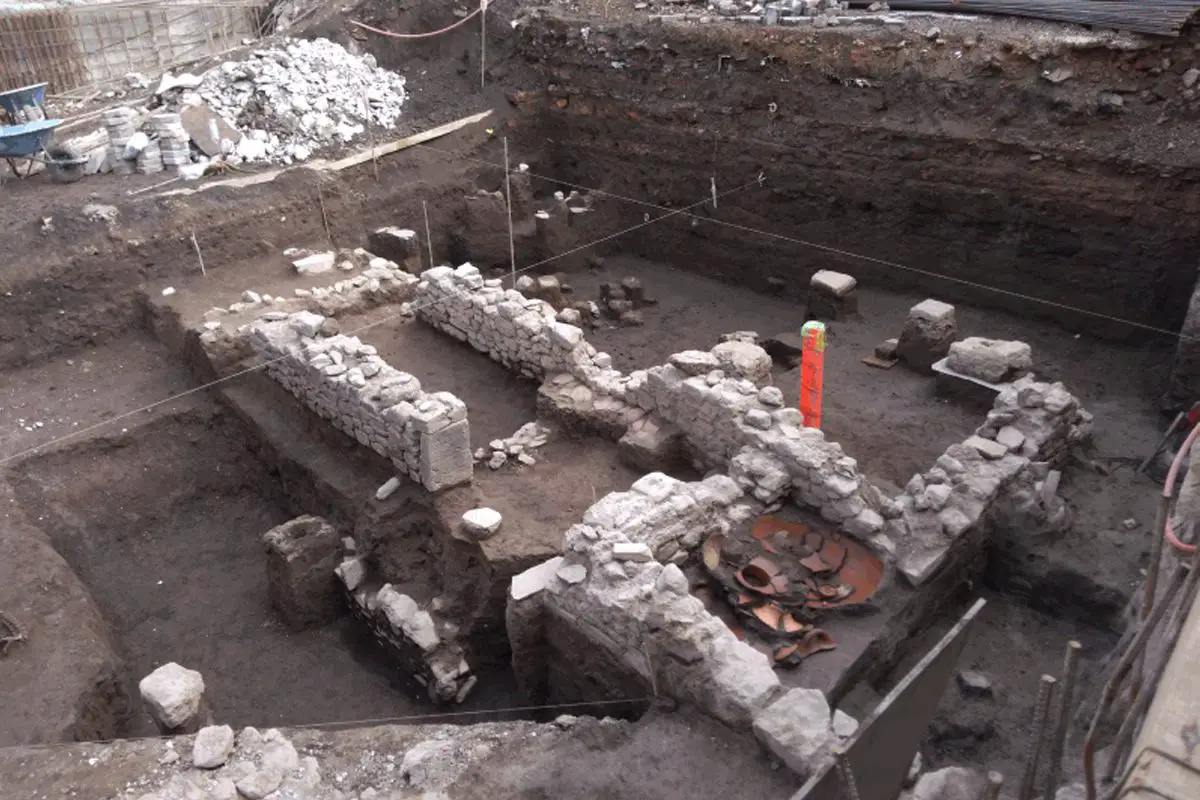Archaeologists from the National Institute of Anthropology and History (INAH) have discovered evidence of cultural resistance amongst the surviving indigenous groups, after the Spanish conquest of the Mexica in Tlatelolco.
Tlatelolco was a pre-Columbian altepetl, or city-state, in the Valley of Mexico in present-day Mexico City. Its people known as the Tlatelolca, were a Nahuatl-speaking people who arrived in central Mexico in the 13th century AD.
During Cortés’s siege of the Aztec capital of Tenochtitlan, the Mexica’s retreated to Tlatelolco, and even achieved a successful ambush against the Spanish conquistadores and their allies, until Tlatelolco was also conquered during the completion of the two-year Spanish Conquest of the Aztec Empire in AD 1521.
Archaeologists conducting excavations near the Colegio Santa Cruz de Santiago on the Paseo de la Reforma Avenue, discovered the remains of a domestic complex and lithic workshop. Researchers identified a ritual sector in the domestic complex, where a small warehouse with globular pots and organic remains was unearthed, suggesting that the site was re-occupied from AD 1525 to 1547.
At the foot of an architectural platform made with stone slabs, the team also discovered two anthropomorphic sculptures, that José Antonio López from the Directorate of Archaeological Salvage (DSA) said “the figures represent two seated characters; one of them was made of basalt and retains traces of blue pigment on the hair, and some black and blue pigment on the cheeks; the other was carved in tezontle, and has sediments of red and black pigment under the eyes, as well as some in white that could be stucco.”
López added: “When they were ‘alive’, in pre-Hispanic times, they were possibly buried in that place with a dedication, but with the arrival of the Spanish and the indigenous people being unable to recover their ancient deities, it is possible that they changed their meaning, as a form of religious and cultural resistance”. During this period, the surviving indigenous people were half evangelised, but continued to practice some of their traditions in what was called Nepantla, meaning “in the middle”.
INAH archaeologists, in collaboration with the Laboratory of Palaeobotany and Paleoenvironment of the Institute of Anthropological Research of the UNAM, also located a pre-Hispanic workshop, with a large amount of grey, golden, and green veined obsidian.
Header Image Credit : INAH





